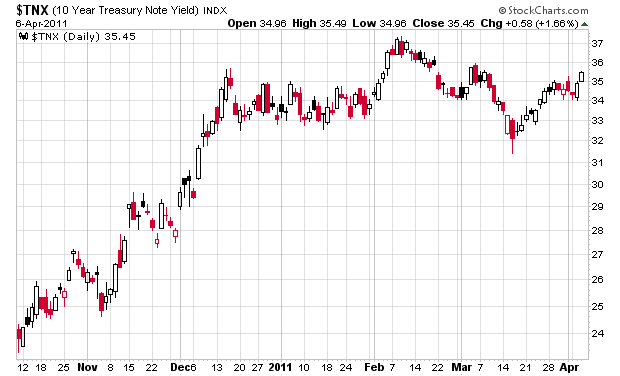I was very curious why the markets tanked when S&P put out a notice that their credit outlook on the USA is negative. It is not like the world knew that they were incurring massive deficits and will find it mathematically impossible to bridge the gap without a political stimulus of the world turning off the capital spigot.
The USA also has the advantage of being able to print its own money, and borrow in its own money. This advantage is compared to the Eurozone countries, which cannot print Euros willy-nilly.
Instead of defaulting, it is quite apparent that the USA is choosing to inflate and dilute the value of its currency. This is not a permanent solution – they still must address the fundamental issue, mainly pouring more money out the window than taking in.
Although there will not be a default, holding US cash is a very difficult decision because its purchasing power will continue to whittle away. People have found diversification avenues in commodities, but you have to weigh in a whole bunch of other dynamics that you wouldn’t have to with plain cash – just ask investors in Uranium. Diversification is also available in real estate, but that has not been very good for US investors for the past few years – and indeed, real estate implicitly bets on the ability of the various states to enforce and respect land titles and property rights. This generally leaves the stock markets – where you can take a risk that companies will be able to maintain their cash flows, assuming the US government doesn’t tax it away to pay off their debts.
An interesting starting point is to look at your own personal consumption habits and invest to simply hedge your lifestyle consumption – for example, if you consume gasoline, purchase an oil company that has sufficient reserves. If you use a mobile phone, purchase shares in that telecom company. Assuming you are paying fair value, you will be able to offset cost increases in your consumption with equity valuation rises.
